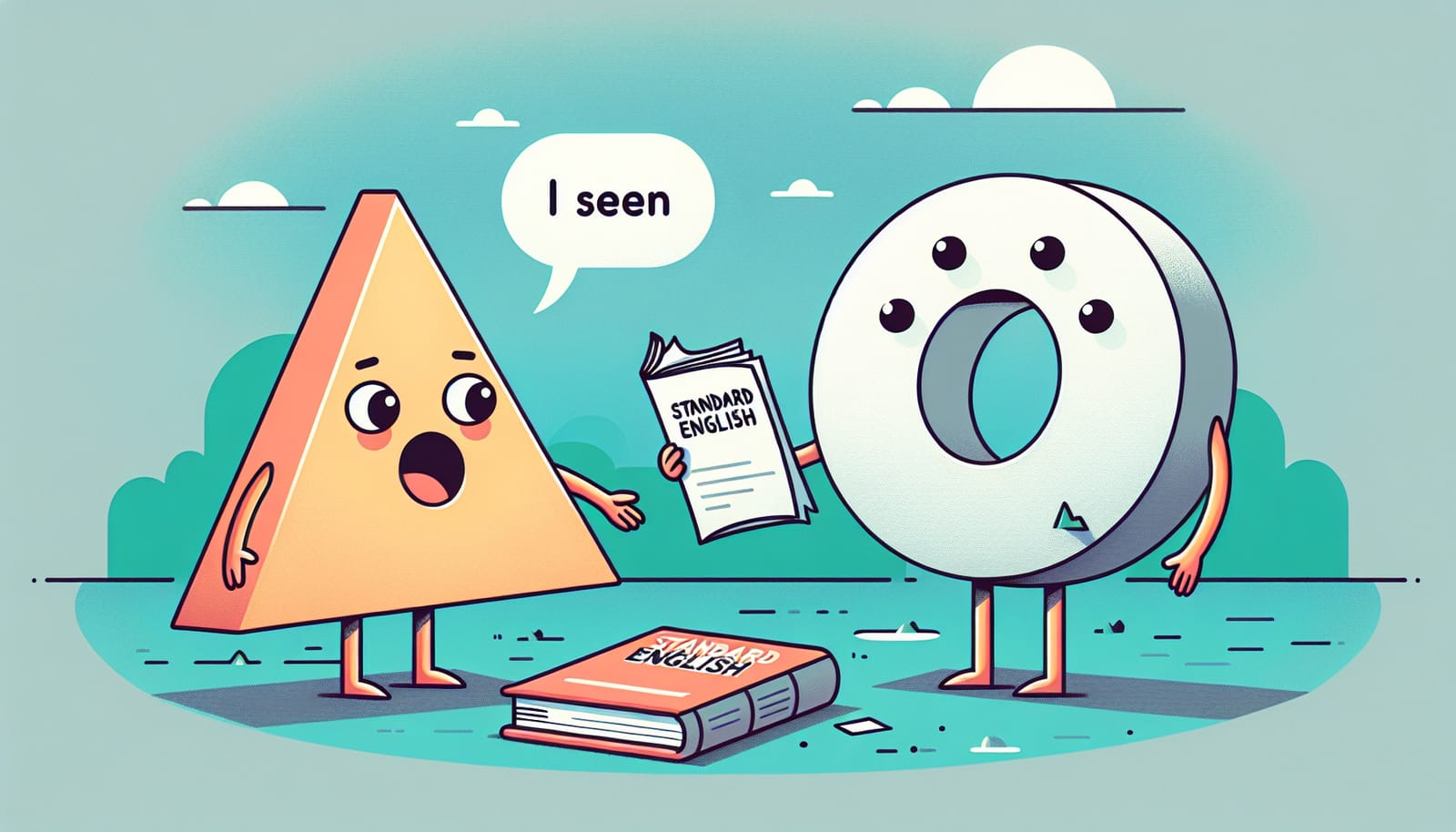Language is a living, breathing entity. It evolves, shifts, and transforms based on culture, region, and even the whims of those who speak it. One phrase that has sparked countless debates among grammar enthusiasts, educators, and casual conversationalists alike is “I seen.” While many are quick to point out that it’s not grammatically correct, it’s a phrase you’ll likely encounter in everyday conversations, music, and even popular media. In this article, we’ll take a lighthearted yet educational journey through why “I seen” isn’t standard English and why you’ll still hear it everywhere.
The Grammar Police: What’s Wrong with “I Seen”?
To understand the phrase “I seen,” we first need to look at standard English grammar rules. In standard English, the past tense of the verb “see” is “saw.” So, you would say, “I saw a movie last night.” In contrast, “I seen” is grammatically incorrect because it uses the past participle form of the verb “see” in place of the simple past form.
The confusion often stems from how different dialects and informal speech patterns can influence language use. “I seen” is an example of what linguists call a non-standard or colloquial form. It’s a phrase that many people use in casual conversation, but it doesn’t hold up under the scrutiny of formal grammar rules.
The Roots of “I Seen”
So, where does “I seen” come from? Its origins can be traced back to various English dialects, particularly those influenced by African American Vernacular English (AAVE) and other regional dialects. In these dialects, the past participle form is sometimes used in place of the simple past tense. This phenomenon is not unique to English; many languages exhibit similar variations that challenge standard forms.
Language is deeply tied to identity, culture, and community. For speakers of AAVE and other dialects, “I seen” may feel just as natural and valid as “I saw” does to others. As a result, it’s essential to approach this topic with an understanding of linguistic diversity and the social contexts that shape language use.
Why You’ll Still Hear “I Seen” Everywhere
Despite its non-standard status, “I seen” is prevalent in various contexts. Here are a few reasons why you’ll still hear it everywhere:
1. Informal Speech and Dialects
In everyday conversation, people often prioritize ease and fluency over strict adherence to grammar rules. This is especially true in informal settings where dialects and regional speech patterns can shine. “I seen” pops up in many casual conversations, particularly in communities where this phrase is commonplace.
2. Media and Pop Culture
Music, television, and film are powerful mediums that can shape language trends. Artists often use colloquial forms to connect with their audience, leading to phrases like “I seen” permeating pop culture. Whether it’s a catchy lyric in a song or a line from a popular sitcom, these expressions can become widely accepted in certain contexts, even if they’re not grammatically correct.
3. Social Media Influence
In the age of social media, language spreads at lightning speed. Platforms like Twitter, TikTok, and Instagram allow people to share their unique ways of speaking with a global audience. Phrases like “I seen” can quickly gain traction, especially when they resonate with larger cultural conversations. The informal, conversational nature of social media encourages language play, leading to a more relaxed approach to grammar.
The Linguistic Landscape: A Broader Perspective
It’s important to remember that language is not static; it’s fluid and constantly evolving. What might be considered “incorrect” today could become standard in the future. Linguists have long argued that there is no single “correct” way to speak a language—there are simply different varieties, each with its own rules and norms.
When we examine phrases like “I seen,” we can appreciate the rich tapestry of language as it reflects the diversity of human experience. Instead of casting judgment, we can embrace the idea that language adapts to the needs of its speakers. This perspective encourages us to be more open-minded about language use and the various ways people communicate.
What Can We Learn from “I Seen”?
So, what can we take away from our exploration of “I seen”? Here are a few key lessons:
1. Embrace Linguistic Diversity
Language is a reflection of identity, culture, and community. By embracing linguistic diversity, we can foster a greater appreciation for the different ways people express themselves. Each dialect and variation adds value to the language as a whole.
2. Be Mindful of Context
Understanding the context in which language is used is crucial. While “I seen” may not be appropriate in formal writing or professional settings, it can be a perfectly valid expression in casual conversation. Recognizing the situational appropriateness of language use can help us communicate more effectively.
3. Language is Always Changing
The rules of language evolve over time. What may seem incorrect today could be widely accepted tomorrow. Staying informed about language trends and being open to change can enhance our communication skills and deepen our understanding of the language.
In Conclusion
While “I seen” may not hold up to the scrutiny of standard grammar, it serves as a fascinating example of how language varies across communities and contexts. By understanding the roots and prevalence of this phrase, we can cultivate a more inclusive appreciation for the diversity of language. So, the next time you hear someone say, “I seen that movie,” remember that it’s not just a grammatical faux pas—it’s a reflection of the rich, complex world of human communication. Embrace the quirks of language, and who knows? You might find yourself using “I seen” in a casual chat with friends!
